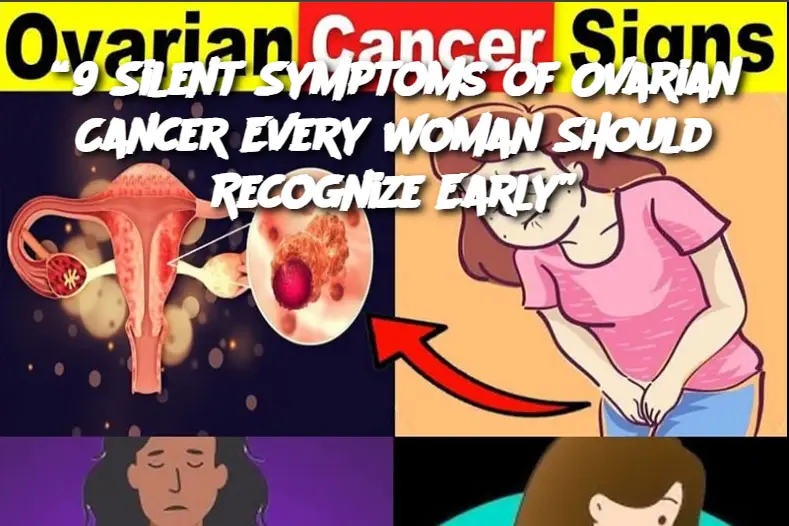Regular bloating that doesn’t subside and makes your abdomen feel swollen or tight can be an early warning sign. Unlike bloating from food or PMS, this type is ongoing and uncomfortable.
2. Pelvic or Abdominal Pain
If you experience pain or discomfort in the lower abdomen or pelvic area that lasts for more than a couple of weeks, it shouldn’t be brushed off. It may feel dull, sharp, or like a persistent cramp.
3. Difficulty Eating or Feeling Full Quickly
Suddenly finding that you feel full after eating very little, or losing your appetite for no clear reason, can point to ovarian cancer. This is related to fluid buildup and pressure on the stomach.
4. Frequent or Urgent Need to Urinate
If you’re rushing to the bathroom more often, or having trouble holding it in, it could be a sign of pressure from a growing ovarian mass.
5. Changes in Bowel Habits
Unexplained constipation, diarrhea, or other noticeable changes in your digestion that continue over time may be linked to ovarian or other gynecological cancers.
6. Unexplained Fatigue
Feeling constantly tired or drained despite adequate rest can be a systemic signal that something’s off in your body — including potential cancer development.
7. Back Pain
Persistent lower back pain, especially if it feels dull and ongoing, may indicate ovarian issues, particularly when coupled with abdominal discomfort.
8. Menstrual Irregularities
Changes in your menstrual cycle — heavier or lighter bleeding, irregular periods, or bleeding between cycles — should be evaluated, especially after menopause.
9. Unexplained Weight Loss or Gain
Sudden weight loss or bloating and weight gain (especially in the abdomen) without changes to diet or exercise routines may be tied to internal changes such as tumors or fluid buildup.
When to See a Doctor
If you notice one or more of these symptoms persisting for more than two weeks, it’s important to consult a healthcare provider. While these symptoms don’t always mean cancer, early evaluation and screening can make a significant difference.
Prevention & Monitoring Tips
-
Know your family history: A family history of ovarian or breast cancer may increase your risk. Genetic testing (e.g., BRCA mutations) can provide more insight.
-
Regular check-ups: Although there is no standard screening for ovarian cancer, annual pelvic exams and open conversations with your doctor help.
-
Healthy lifestyle choices: A diet rich in fiber, lean proteins, and antioxidants, along with regular physical activity, may lower overall cancer risk.
-
Listen to your body: If something feels off, trust your intuition and seek medical advice.
Variants (Types of Ovarian Cancer)
Ovarian cancer isn’t one-size-fits-all. The three main types include:
-
Epithelial tumors: The most common type, forming on the outer layer of the ovary.
-
Stromal tumors: Arise from hormone-producing cells and are often detected earlier.
-
Germ cell tumors: Rare and typically affect younger women; they start in the egg-producing cells.
FAQ
Q: Are these symptoms always a sign of ovarian cancer?
A: Not necessarily. These symptoms can be caused by other non-cancerous conditions, but their persistence or combination is what raises concern.
Q: Is there a screening test for ovarian cancer?
A: Currently, there’s no reliable routine screening. Transvaginal ultrasound and CA-125 blood tests may be used when symptoms are present or if you’re high-risk.
Q: Who is most at risk?
A: Women over 50, those with a family history of ovarian or breast cancer, or with certain genetic mutations (like BRCA1/2) have a higher risk.
Q: Can ovarian cancer be cured?
A: When detected early, treatment is more likely to be successful. However, many cases are found in later stages, which makes early recognition vital.
Q: What’s the difference between ovarian cysts and ovarian cancer?
A: Cysts are often benign and part of the menstrual cycle, but cancer involves abnormal cell growth. Persistent, painful, or abnormal cysts should be evaluated.
